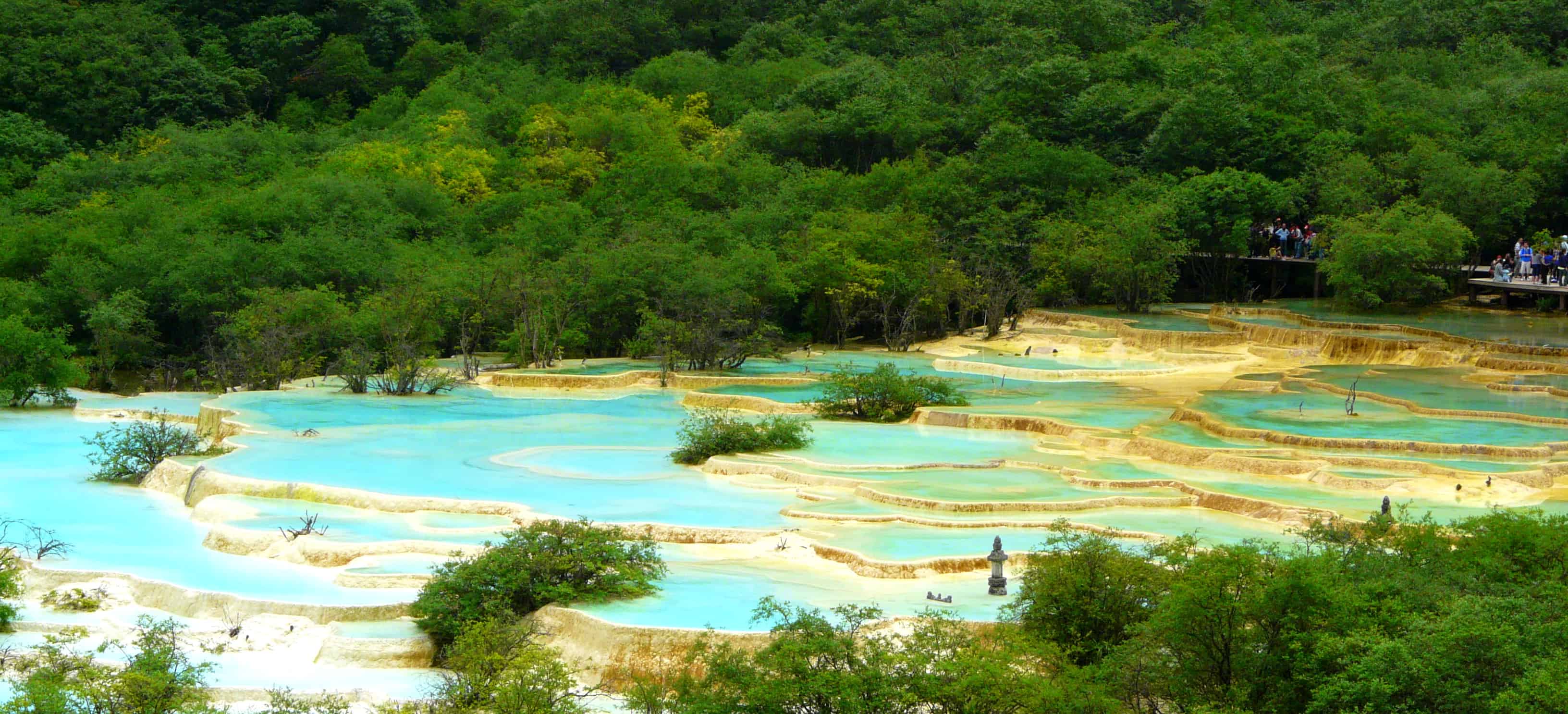 https://www.flickr.com/photos/smwhang/
https://www.flickr.com/photos/smwhang/
The Huanglong Valley is a scenic and historical area located north west of Chengdu – the capital city of China’s Sichuan province.
It has been described as a ‘fairy tale land on earth’ because of its picturesque snow-capped mountains, colourful pools of water, magical waterfalls and dense forests that have been left untouched by the increasing urbanization in China.
What makes the area seem so magical is that throughout the valley, pools of water can be found in nearly every colour, ranging from blue and green to orange and yellow. The colours are caused by the limestone deposits and a variety of algae species. Due to the golden colour of the limestone, it’s said that the valley looks like a golden dragon winding its way through the forest landscape, which is why it was given the fitting name of Huanglong, which means ‘yellow dragon’.
Originally formed by tectonic activity, the pools were then eroded by the flow of the Fujiang River through the Danyun Gorge. This river flows through the valley leaving a series of pools, hot springs and waterfalls in its wake.
 creativecommons.org/Ken Marshall
creativecommons.org/Ken Marshall
While this region has been added to the list of UNESCO world heritage sites, it was protected by the Chinese people long before that. At first, its natural beauty was preserved due to the inaccessibly of the region, but since the area opened up, the local people have fought hard to protect their awe-inspiring yellow dragon.
The Huanglong Valley is even more special due to its unique position on the globe. It sits as a transition zone between damp forest zones and mountainous regions. The valley also intersects four floral regions: the Eastern Asia, Himalaya, Subtropical, and Tropical zones. This means a huge variety of local flora and fauna. These varied forests are also home to many endangered animals, including the giant panda and the Sichuan golden snub-nosed monkey.
 https://www.flickr.com/photos/ist4u/
https://www.flickr.com/photos/ist4u/
Huanglong Valley also plays host to the fascinating Huanglong Monastery, which is comprised of three temples — the front, middle and back temples. Sadly, only the back temple is still fully intact. The monastery was built during the Ming era and served worshipers of the Taoist and Buddhist faiths. Despite the fact that the monastery is now defunct, local people of those two faiths still flock there.


